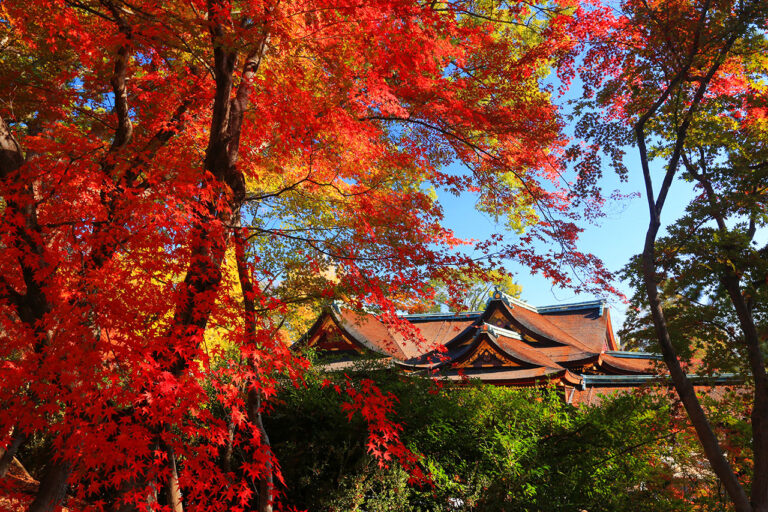
Introducing the highlights of [Kitano Tenmangu], which is familiar with the god of learning...
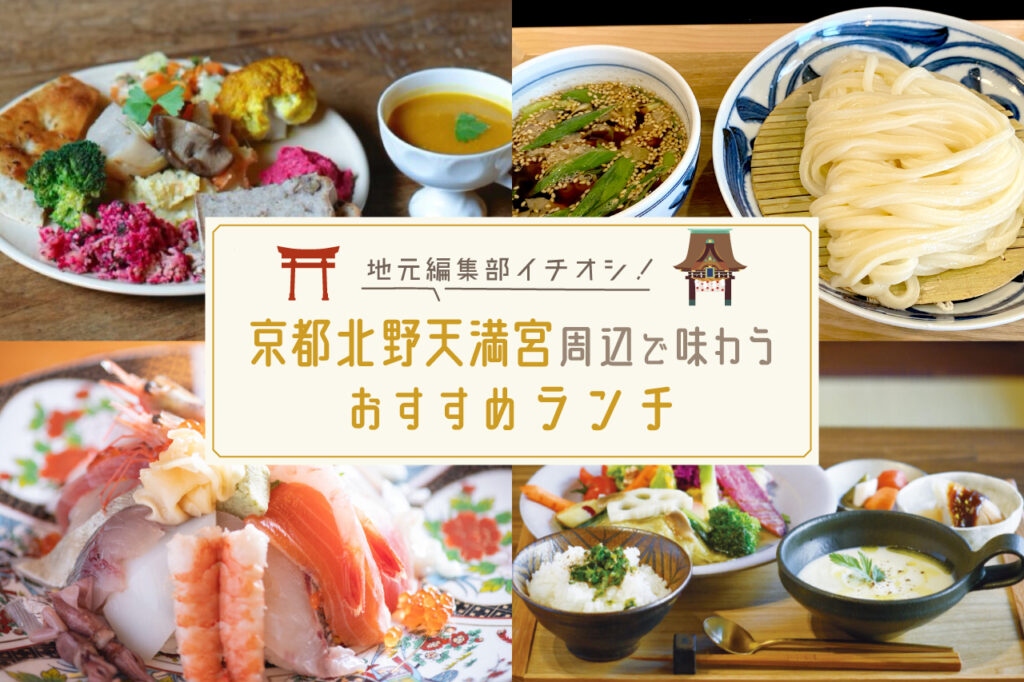

The area around Kitano Tenmangu Shrine is a hot spot for attractive restaurants such as ramen stores operated by long-established restaurants, sushi restaurants opened by veteran chefs, and handmade udon restaurants! In this issue, we introduce the best restaurants for lunch recommended by our editorial department.
The owner, who trained at udon restaurants in Kagawa and Osaka, is known for his freshly-kneaded udon noodles made by hand without the use of machines. The owner's recommendation is the Tsukemen (Japanese beef and Kujo leek tsukemen), which uses fresh Kujo leeks from Makimura Noen and black beef from Ginkakuji Onishi, and the tsukemen soup with ginger accent is very appetizing. The new restaurant has high expectations for the future development of its menu. The restaurant is always equipped with picture books and other materials for children, so feel free to bring the whole family.
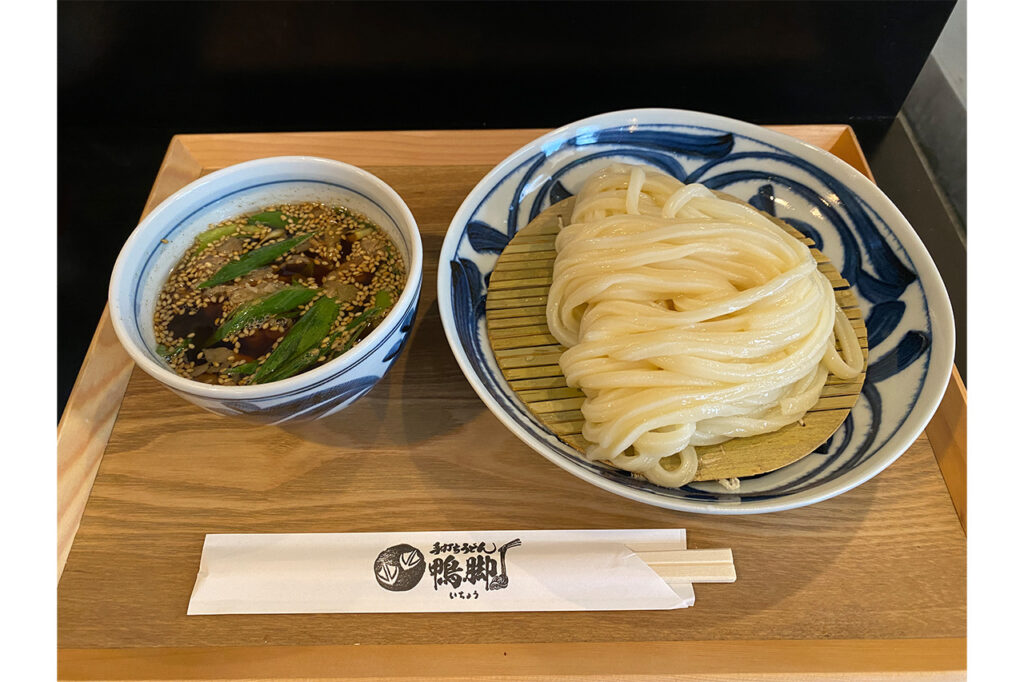
Tsukemen (tsukemen) with Japanese black beef and kujo leek: 1,100 yen. A perfect combination with soft and firm noodles.

Here you can enjoy Wagyu beef steaks with a view of a beautiful garden. Mr. and Mrs. Kimura, who run the restaurant, took over the business from their father, who ran a meat kappo restaurant offering meat course meals. The famous steak stacked with rice is made from Japanese black beef from Saga, Shimane, Oita, and other regions. You can choose the amount of meat from 80g to a generous 200g, and it also comes with a meat sucker and beef stew to enjoy the meat to the fullest.
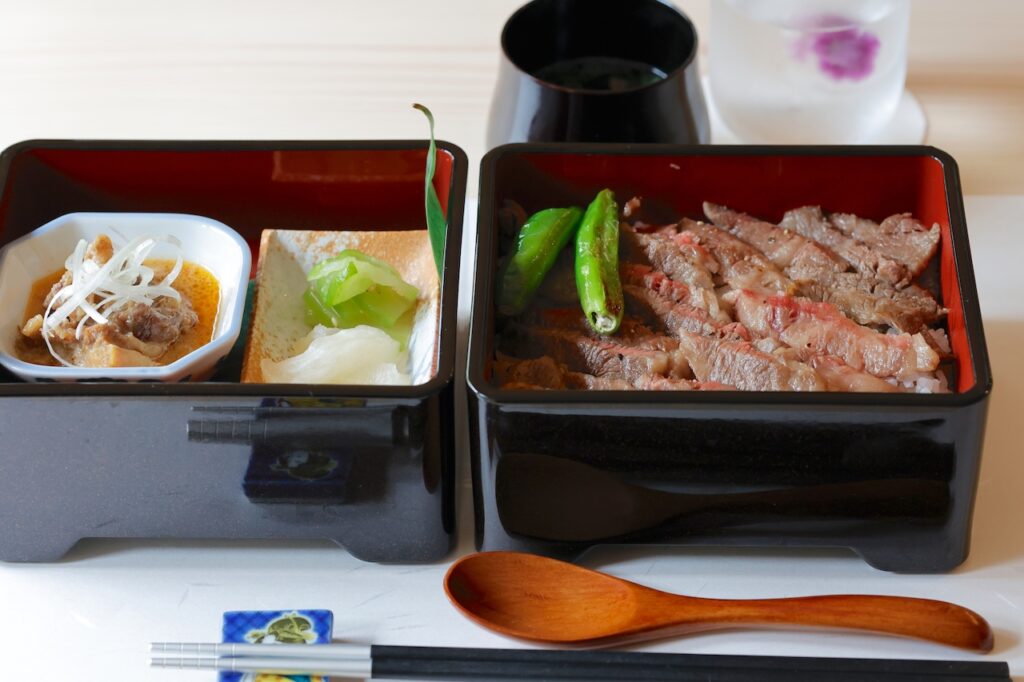
Wagyu Steak Jyu - Bamboo 3927 yen. 120g of meat, served with your choice of sauce with apple as a secret ingredient.

Every morning, ICHIHARA-san, the owner of the soba store, handmakes his own soba using the best buckwheat seeds from all over Japan, grinds them on a millstone, and uses Kyoto's famous water to make nihachi, 90%, and 10% buckwheat noodles of different thicknesses. The soba has a beautiful pale green appearance and a memorable chewy texture. There is also a tatami room on the second floor, where you can relax with your children.
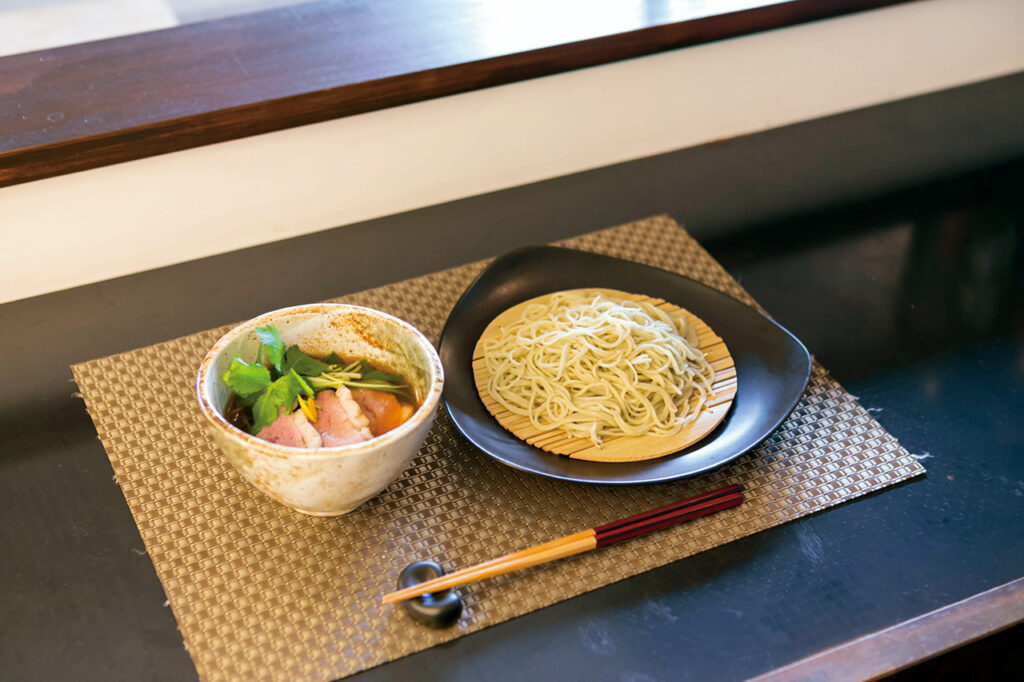
Kawachi Kamo Seiro (duck roe) - 2,000 yen. The duck's tender meat and the sweetness of its fat go perfectly with the sauce.

Since its establishment in 1879, the restaurant has been offering for lunch its special pickles, which have been loved by locals for many years, as an ochazuke kaiseki (tea-ceremony dishes). The menu includes an assortment of pickles and a set of fish that has been marinated in sake lees made from matured Nara pickles and slowly grilled to a rich aroma. Enjoy your meal in a traditional machiya-style tatami room located in the back of the restaurant while enjoying the atmosphere.
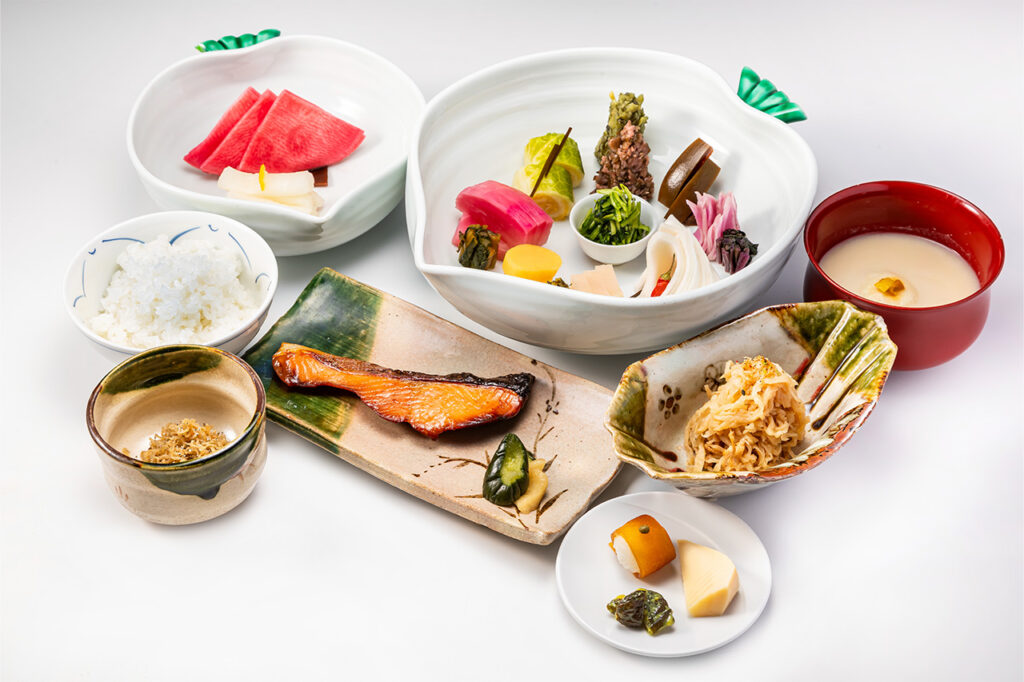
Ochazuke Kaiseki + fish with sakekasu (salmon or Spanish mackerel) for 2,640 yen. The beautifully arranged colorful pickles will bring a smile to your face!

This sushi restaurant was opened by a veteran chef with a career spanning more than 40 years. The owner has taken over from a deceased acquaintance, and offers mackerel sushi, seafood rice bowls, and even set menus to keep you entertained all day long. The standard menu includes a chasoba set, each chasoba with a choice of either mackerel sushi or pressed hamo (pike conger) sushi. In addition, many other daily specials using fish directly shipped from the market are on standby.
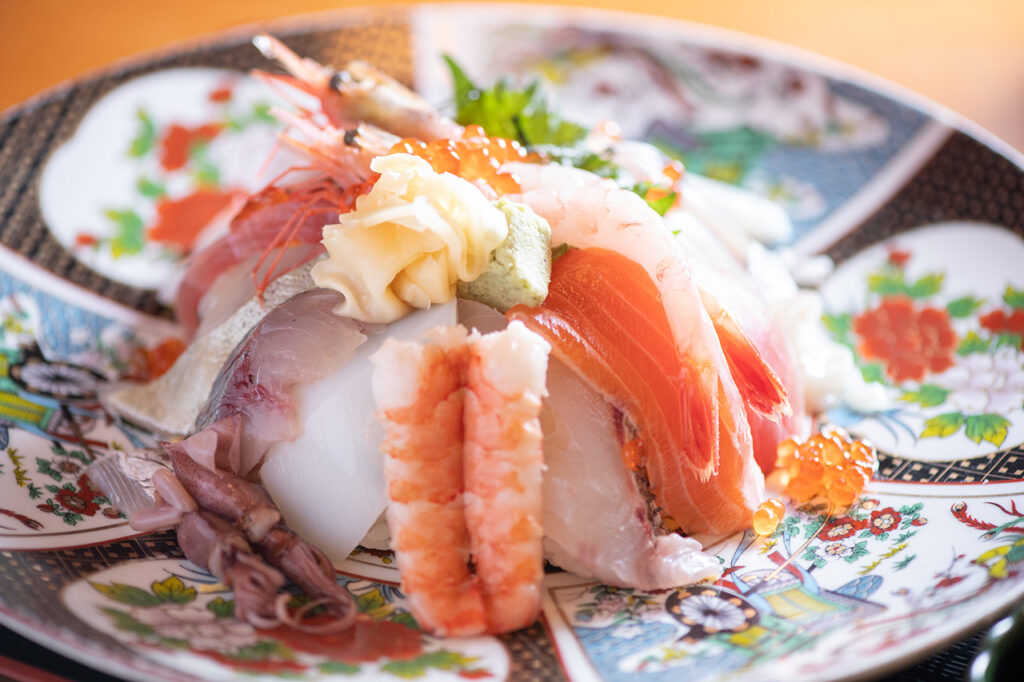
Bikkuri Kaisen Don: 1,320 yen. About 8 to 10 kinds of fresh seasonal ingredients are beautifully lined up. The volume is so large that it is hard to believe it is for one person. Served with chasoba (green tea soba).

This long-established soba noodle store in Nishijin began in 1905 as a food stall serving soba noodles at night. Today, the fourth-generation owner, Yoshinori Tanigaki, and his mother Izumi and her son continue to preserve the same taste that has remained unchanged since the establishment of the restaurant. It is especially surprising that the additive-free broth, which is made from scratch at the restaurant, still tastes the same after more than 100 years. The restaurant offers a wide variety of dishes, such as set menus and rice bowls, that one would not expect to find in a soba restaurant, and many fans visit from all over Japan. Some dishes have been revived in response to customers' requests, such as Naruto Soba with grated yam and Nishin Soba, and the year-end special Kombu Maki.
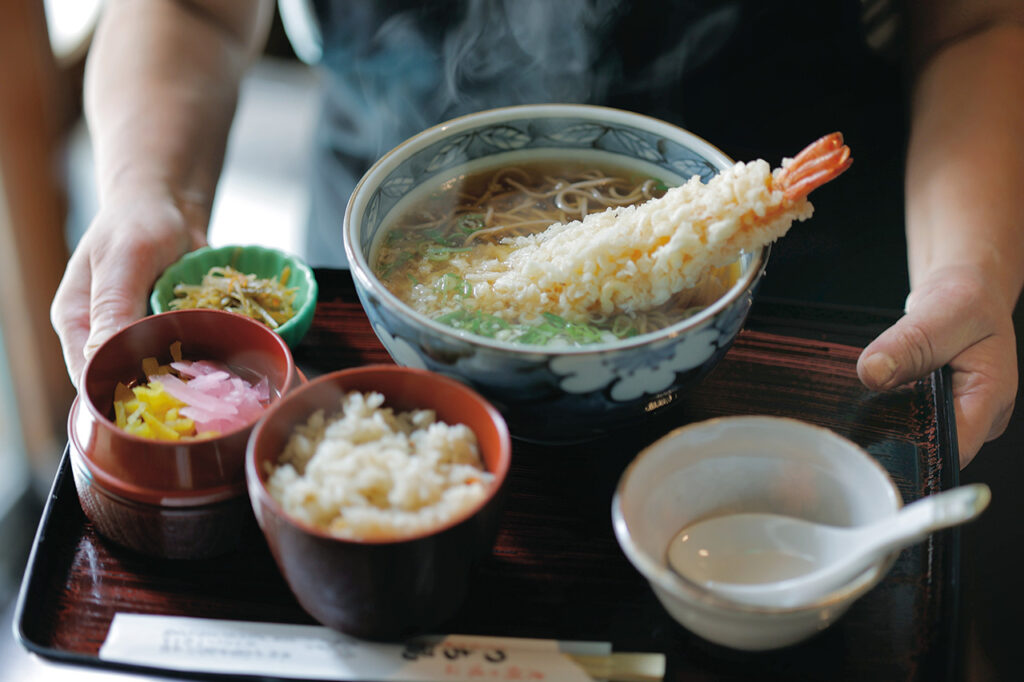
Tempura Soba Noodle: 980 yen. +Comes with kayaku gohan (boiled rice with kayaku) and kobachi (small bowl of cooked food), which can be added for 250 yen. Ebi-ten (shrimp tempura) is coated with a secret batter, and the batter is slightly thickened so that it absorbs the broth and makes the whole soba even more flavorful.

This ramen restaurant was established on the second floor of a long-established restaurant [Gotsuji no Kombu], which has been in business for more than 120 years. In a stylish space with gray walls and a wooden counter, you can enjoy a course of Kombu Ramen. First, compare mizu-dashi (water-dried kelp) of makonbu, Rausu kelp, and Rishiri kelp in a glass of wine, and then enjoy the oboro kelp that Mr. Kuze, the representative, shaves in front of your eyes. The main dish, kelp ramen, has a clear soup with concentrated kelp flavor and chewy noodles. Kelp ramen is served on a one-kelp basis, with at least one item purchased at the store on the first floor.
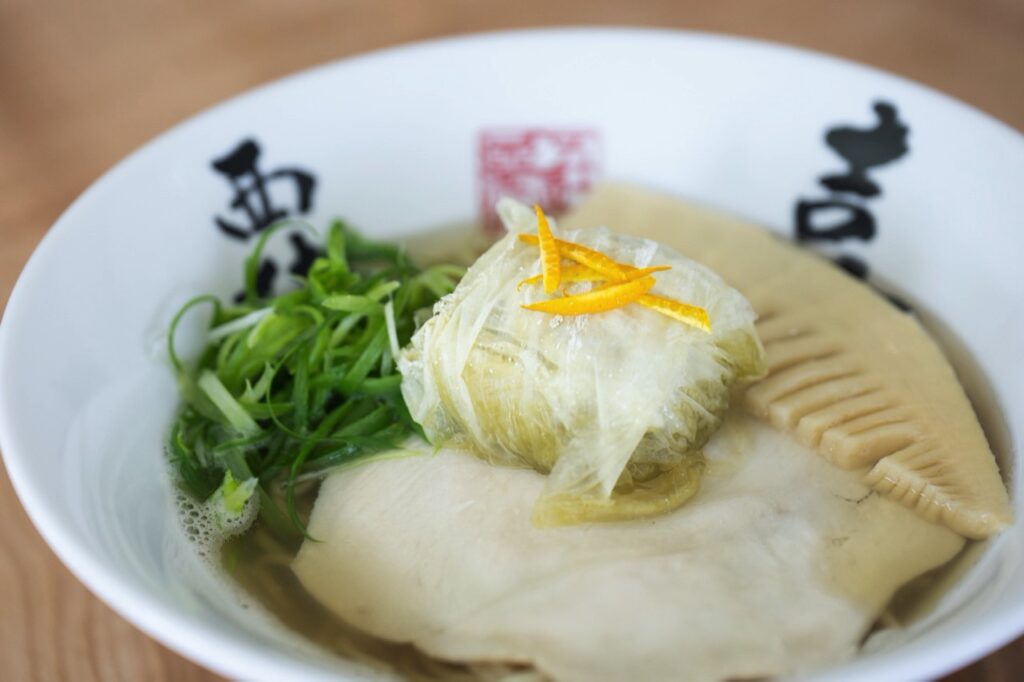
Kombu Ramen: 1152 yen. The soup is made from a blend of kelp, Rausu kelp, and Rishiri kelp, with dried bonito flakes, shellfish, tea leaves, and other ingredients added in water. [It is a perfect match for the whole wheat noodles from Raamen Tohichi.

This fruit and vegetable store and diner makes use of a 100-year-old townhouse. As soon as you enter, you will find a grocery store space with a wide variety of fresh leafy greens, potatoes with mud on them, and seasonal fruits. Moving to the back of the building, the "Sukoyaka Shokudo" stands by, which was started by Chie Nakamoto, the representative of the company, who started the business by utilizing her experience as a cooking school owner, along with her desire to "do something about the delicious vegetables that are called 'B-grade' vegetables. It is a warm space that connects producers and consumers, with a happy cycle of tasting vegetable-filled lunches and sweets and buying them back because they were so delicious.
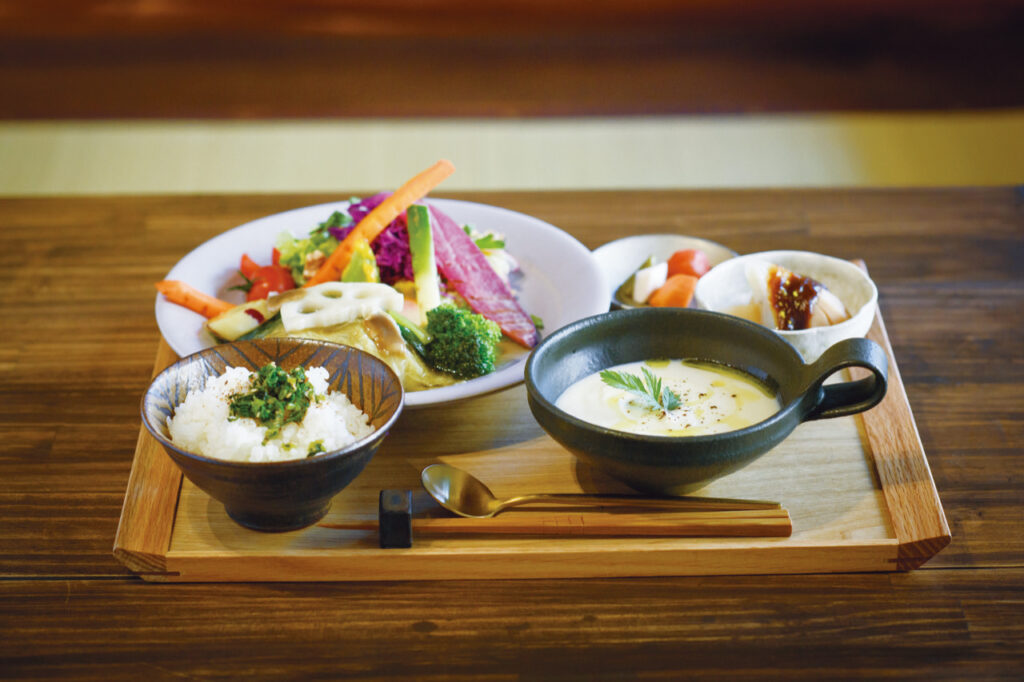
The photo shows an example of the Sukoyaka Set (1,700 yen), which features seasonal vegetables as the main ingredient. The deliciousness of the vegetables soaks through your entire body. Including a drink is 1,900 yen.

This Japanese restaurant was established near Kitano Tenmangu Shrine. The interior of the sukiya-style restaurant is beautifully decorated in a Japanese style, and is equipped with private rooms as well as counter seats. [The owner, Mr. Senda, who studied at Shimogamo Saryo and Kenshu Horibe, offers only one course, 5,500 yen for lunch and 15,000 yen for dinner. Each beautiful dish, which skillfully reflects the season, is sure to impress each time it is brought to the table. The eel bowl, which appears at the end of the lunch course, is made with eel, a technique inherited from his family's eel cuisine in Wakasa, Fukui. The fragrant grilled eel with secret sauce is exquisite. Try it with a glass of Wakasa's local sake, such as "Kamoei," which is rare in Kyoto.
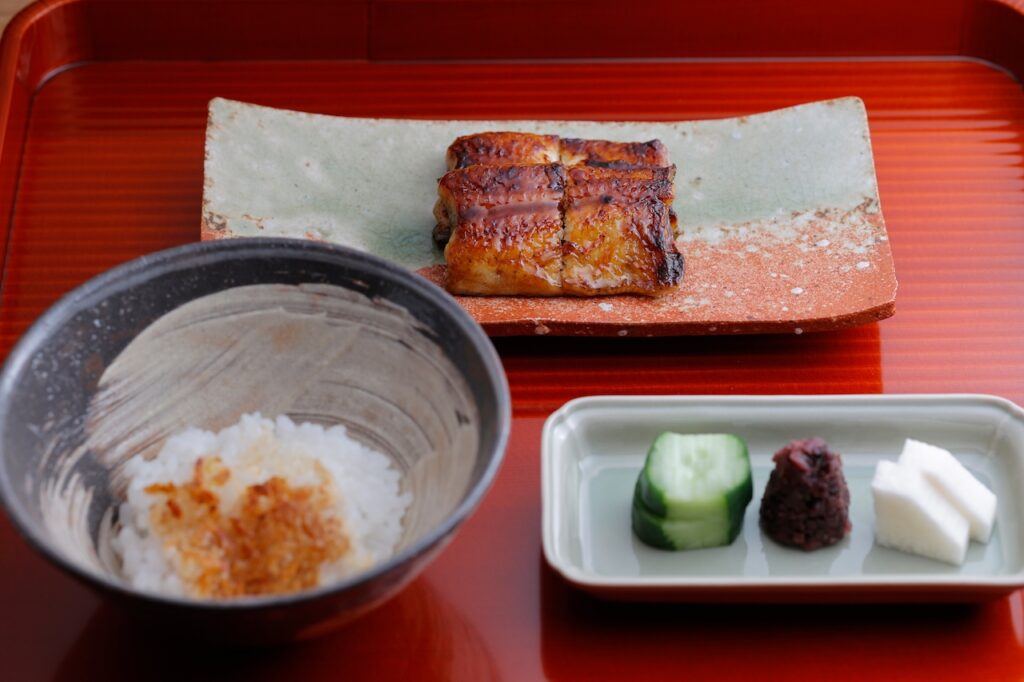

A large soft-serve ice cream sculpture welcomes you from inside a Japanese-style room as you pass through the gate. After the playful and artistic approach, you will find a seating area with a relaxed atmosphere that still retains the machiya-style atmosphere. Enjoying a view of the tsuboniwa garden, you can savor hand-drip coffee from Circus Coffee (600 yen), original herbal tea from niwatoco tea (730 yen and up) made by a pharmacist-blender, and other carefully selected coffee menu items. Of course, sweets with soft-serve ice cream are also on standby. Take-out is also available.
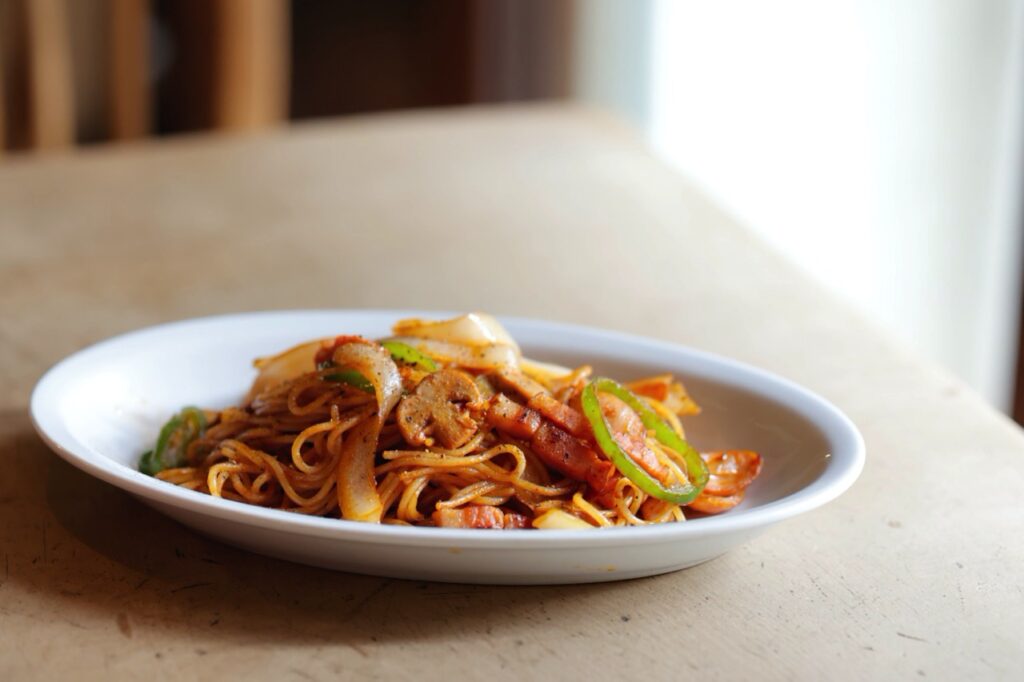
Old-fashioned Neapolitan with the classic ingredients of onions, bacon, mushrooms, and green peppers is 900 yen. The secret ingredient is a small amount of Worcestershire sauce.

The owner, Kimitaka Nagae, is the third generation of a long-established udon store established in Imabari City, Ehime Prefecture in 1950. Following in the footsteps of his grandfather, he uses wheat flour from Kagawa Prefecture to make his homemade noodles, which are moderately firm and easy to eat. The soup stock, made by boiling iriko (dried sardines) in water for about 12 hours at a temperature below 70 degrees Celsius and adding dried bonito flakes and other ingredients, is also a direct descendant of his grandfather's recipe. The glossy appearance of bukkake udon is appetizing, but if you want to enjoy the flavor of iriko, warm udon is also recommended. The self-serve oden (oden is a kind of oden dish served at udon restaurants in Shikoku), priced from 130 yen, is also available throughout the year.
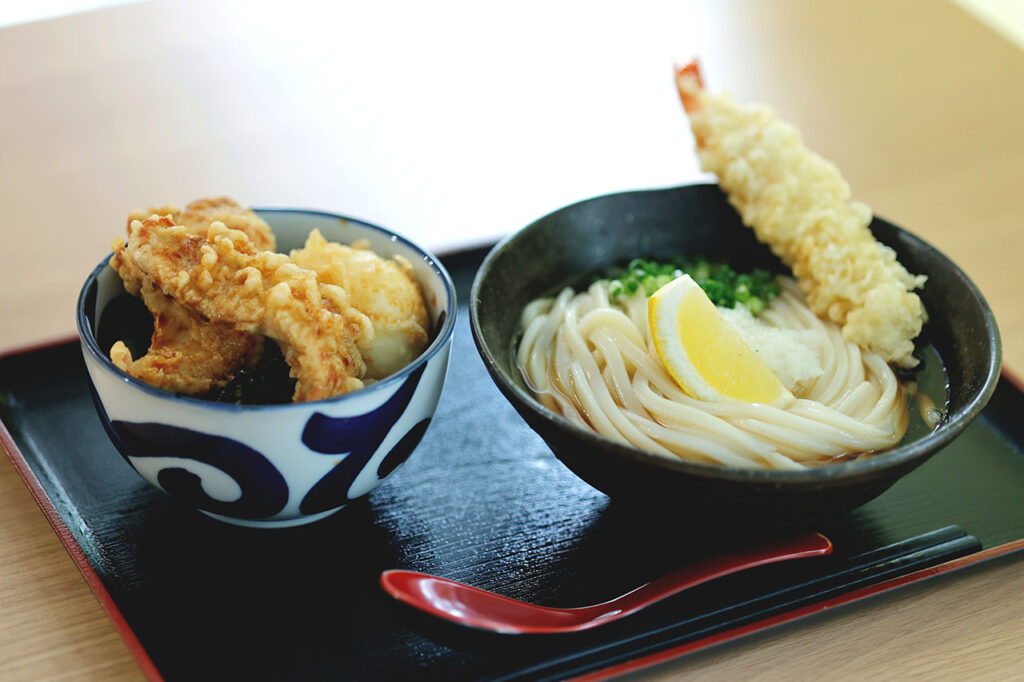
A set of udon noodles with shrimp tempura bukkake and mini oyakotendon topped with crispy fried chicken tempura and half-boiled egg tempura for 1,330 yen.

The store's name [nabura], named by the owner who loves fishing, refers to a school of small fish jumping on the surface of the sea, being chased by larger fish. The ramen store, which uses the auspicious word for the sea where big fish are found in its name, offers seafood ramen with the aroma of kombu and mackerel broth. The ramen is made without using any chemical seasonings and is low in salt so that it can be enjoyed by men and women of all ages on a daily basis. The soup is served with a large bowl of mackerel and noodles, which are flat and wavy, and is sure to be consumed in no time.
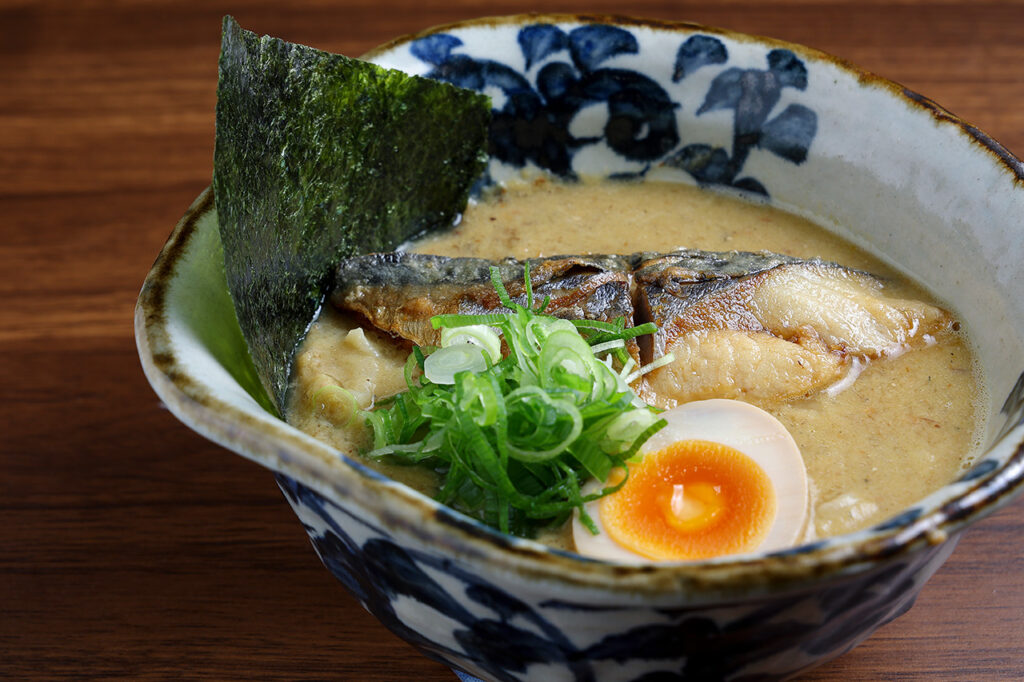
Ramen: 940 yen. The deep broth is packed with the flavor of kelp and mackerel, and the fried mackerel goes perfectly with it!

Upon entering the restaurant, one's eyes are immediately drawn to the tubs of brown rice of various varieties and origins. In 1996, the fourth generation of the long-established Oome Rice Shop, which has been in business since the end of the Edo period, started a Western-style restaurant out of his love of cooking. Since then, many customers have been asking, "Where does the rice come from? Since then, the restaurant has been displaying the brand of rice served that day. The freshly-polished rice is served with a choice of large or small portions, and brown rice is also available for a limited number of 10 servings. The restaurant is proud of its hand-kneaded hamburger steak topped with homemade demi-glace sauce. In winter, fried oysters are also available, which will surely make your meal go down a treat.
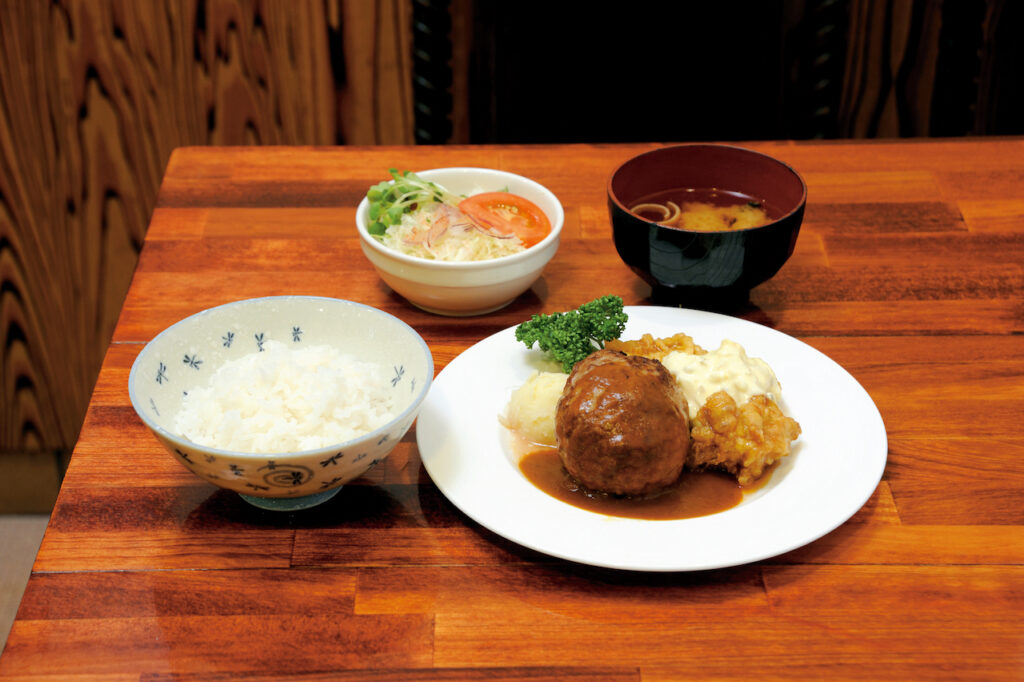
Hamburger steak & chicken nanban lunch for 1,550 yen. The juicy hamburger steak is filled with a demi-glace sauce made by slowly simmering vegetables, meat, and wine.

A hidden restaurant located in an alleyway in Nishijin, marked by a sign with a large wooden spoon. The interior of the restaurant, which used to be an Nishijin textile workshop, retains its original earthen walls and the earthen floor where the weaving machine used to be. The French owner, Mr. Pichou, prepares a daily plate of several Mediterranean dishes. He is also proud of his hard breads, which he made the most of his one and a half years of training at Bakery Marmo in Sendai. The daily plate comes with baguette, cumin-scented focaccia, and other breads that go well with the dishes, as well as a soup that changes weekly.
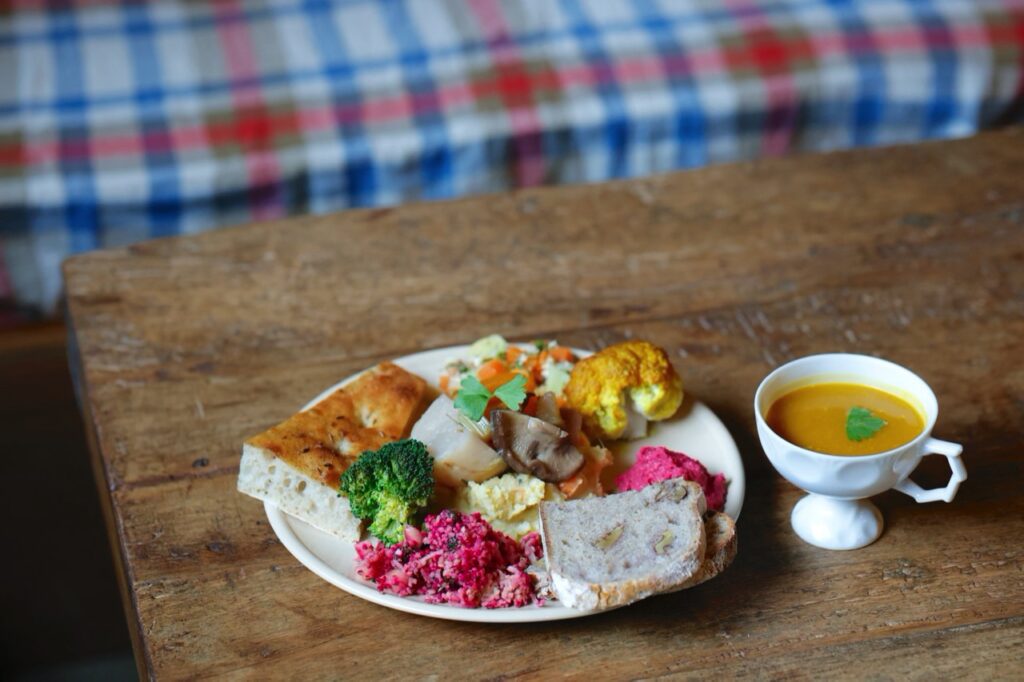
On this day, a couscous salad, beet hummus, and seven other dishes are served on one plate. The daily plate, which includes Mediterranean dishes, bread and soup, costs 1,800 yen.

Over 600 interviews per year! An order site carefully selected by the editors who knows Kyoto and Shiga.
nowOfficial LINE friend registration500 yen OFF coupon is being issued!
Distributed every Friday morning at 8:00 am! From new restaurant information to event information that we want to share with you, We deliver articles about Kyoto that are useful to know. About 20,000 people have registered.Click here to add a friend!
 News
News Feature article
Feature article Featured event
Featured event